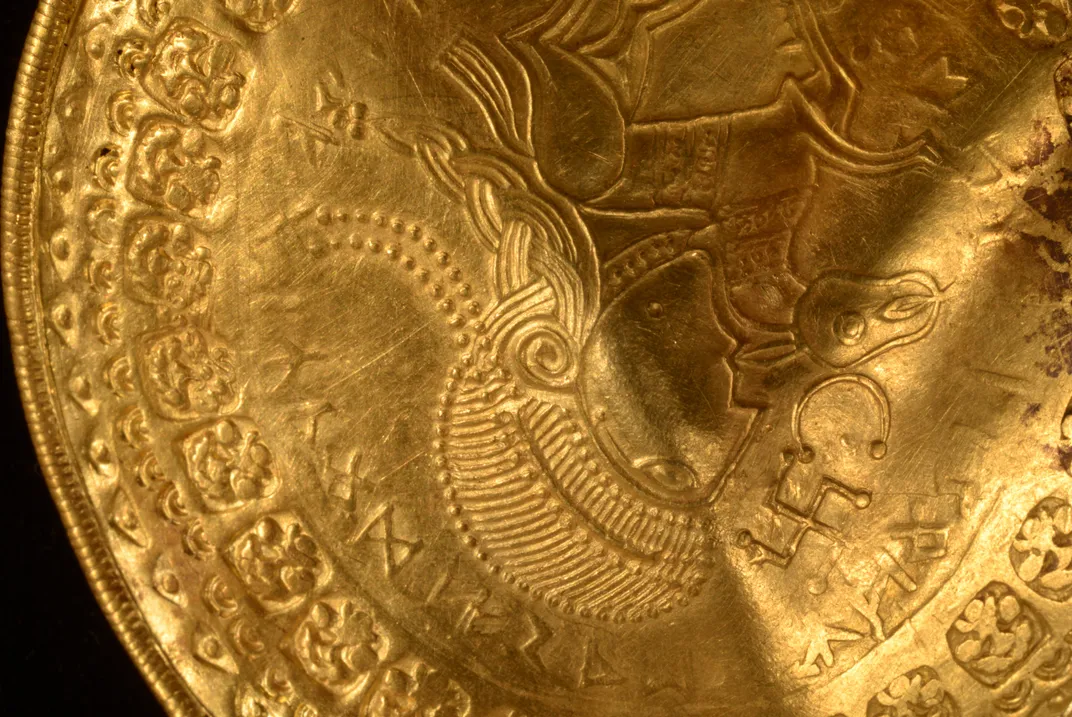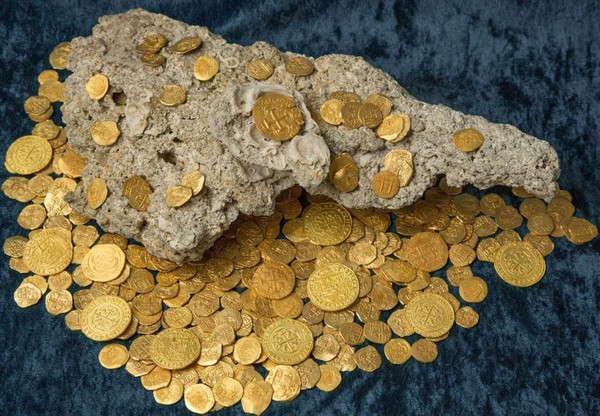What an incredible discovery made by Ole Gierp Schytz!

Schytz recalls the sound of the device powering on, then watching as it moved the soil away to uncover a small, oddly-shaped piece of metal.
:focal(1170x744:1171x745)/https://tf-cmsv2-smithsonianmag-media.s3.amazonaws.com/filer/4f/cf/4fcf0362-237b-46f2-9a4a-108e96aba9c5/lsotonyo.png)
In an interview with TV Syd, as reported by Felix Allen of the Sun, Schytz characterized the find as “pure luck at its finest.” He went on to say, “Denmark spans 16,621 square miles, yet somehow I managed to stumble upon the exact spot where this discovery was waiting to be found.”

As per a statement, it is mentioned that the jewelry mainly includes bracteates – small medallions popular in northern Europe during the Migration Period (around 300 to 700 C.E.). These pendants were worn by women and often had magical symbols or runes inscribed on them for protection.

According to Mads Ravni, a researcher at the Vejle museums, many of the symbols found on the recently discovered bracteates are recognizable to scholars. Understanding their significance will provide insights into the mysterious societies that lived in the region before the Vikings arrived. One of the medallions features the Norse god Odin and seems to be inspired by Roman jewelry that portrayed emperors as divine beings, as reported by TV Syd.
/https://tf-cmsv2-smithsonianmag-media.s3.amazonaws.com/filer/5f/cf/5fcf6dbd-557f-4dae-9ff0-e4eece7b3e6d/gold_artifacts.jpg)
Items found in the collection include ancient gold coins from the Roman Empire that were transformed into jewelry. One of these coins showcases Constantine the Great, who ruled from 306 to 337 C.E. This indicates that Jelling, known as a center of Viking civilization between the 8th and 12th centuries, was a significant hub of power with extensive trading connections across Europe, as reported by ArtNet News.

The flawless handiwork of the items indicates that they were likely owned by someone of a prestigious status.

Scientists believe that the gold was hidden underground either to safeguard it from invaders or as a final offering to the gods. This discovery is linked to the year 536, when a volcanic eruption in Iceland spread ash across the sky and led to a severe famine in Scandinavia. Similar collections of gold items, such as a set of 32 artifacts discovered on Hjarno Island, have also been found in the area and are believed to be from around the same period.